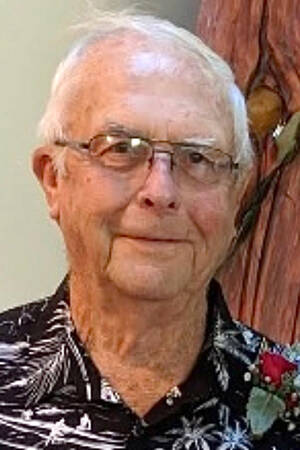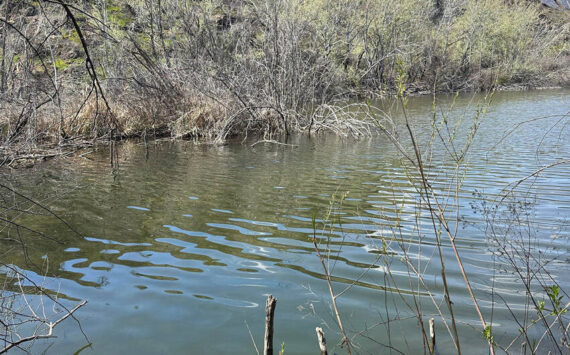OKANOGAN – The State Environmental Policy Act (SEPA) appeal hearing for the Eagle Canyon Long Plat 2008-8 will be on Tuesday, Feb. 17 at 2 p.m. in the Commissioner’s Board Room.
The Eagle Canyon Long Plat 2008-8 is a development agreement submitted by Tonasket Homesteading LLC for the development and subdivision of 112 lots on approximately 325 acres. If approved, this development would be west of Tonasket, west of Highway 7, north of Pine Creek Road and south of the Tonasket Airport.
A group of residents living in the area where the development is proposed have appealed the SEPA checklist over concerns about the use of water.
“The SEPA checklist submitted by the applicant is incomplete and misleading, failing to identify the cumulative environmental impacts that this project will have on the surrounding environment, but it is also part of a flawed application packet,” Jessica McNamara wrote in a letter to the Okanogan County Commissioners to appeal the SEPA checklist.
McNamara, who brought her appeal along with Robert Harris and Thomas Black, states that the proponents of the development neglected to follow county ordinances when they submitted their application. She states that OCC 16.20.010(c5) “requires that a certificate of water adequacy from the County Health Department accompany the application. This certificate was not included as part of the application packet, thus the entire packet, including the SEPA checklist are null and void and should be remanded to the applicant for correct procedure.”
The original hearing by the planning commission about this development was scheduled for Monday, Jan. 26, but was continued to Monday, Feb. 23 due to the SEPA appeal. During the Jan. 26 meeting, however, the planning commissioners decided to hear public comment from residents who traveled down to Okanogan for that purpose – hearing from the proponents of the development first.
Tim Verbeck, of Santa Cruz, Calif. is one of the proponents of the development. During public comments, he stated that the number of lots may be reduced but would not be increased. The commissioners then heard from those who were appealing the SEPA application.
Black spoke first, stating that he views this development as the worst part of California coming into his own backyard. Then Rob Thompson of Tonasket spoke, saying that he wishes the proponents would consider reworking the proposal so that the houses would only be 25 percent of the 325 acres, leaving more area for wildlife and making less of an impact on wildlife.
Harris, who shares a property line with the development, asked why the development would be allowed when there is not adequate water for the number of proposed homes.
“There is no water right on these 325 acres,” he said. “The only well that’s on this plat is ten feet from my property line and 100 feet from my irrigation line and draws water from my aquifer. During draught years, I do not have enough water to irrigate my property.”
Larry Johnson, who draws water from Harris’ well, asked if the drain that the development would have on that well was taken into consideration when the original proposal was submitted.
Another concern besides the water rights was brought up by Leroy Orr, president of the Tonasket Airport Improvement Club. He said his concern is protecting the airport and making sure the density of the housing development would not exceed limitations.
“We’ll be flying over that area and many airports have been closed because people moved in around them and then complained about the noise,” Orr said.
Also in McNamara’s letter to the Board of Commissioners, she states that the Okanogan County Department of Public works said “that the applicant has not provided sufficient information as to the impacts on three affected roads – North Pine Creek, the Airport Road and County Highway 7 – and requests a transportation study. The proposed mitigation does not answer this objection. The checklist itself fails to identify and analyze how the project’s proximity to the Airport Road will affect access and use of that semi-primitive but important road.”
McNamara also writes that the SEPA checklist for animals is incomplete because it does not accurately consider access or mitigate the impacts of this development to the wildlife that currently use this area. She writes that bighorn sheep, cougar migrating, sand cranes and geese aren’t listed but are often seen in the area.
Also being appealed off the SEPA checklist is the transportation checklist which McNamara says is incomplete and inaccurate stating that “it fails to consider the cumulative impacts to develop an adequate road system and the socio-economic impacts of increased road traffic, costs to taxpayers and other costs related to adding such a large development.”
Finally, McNamara writes that the SEPA checklist for air and environmental health is also incomplete.
“Dust from existing traffic on Tonasket Airport Road is already an ongoing issue,” she writes. “No mitigation for dust from additional traffic was provided, nor was any mitigation provided for the ongoing traffic on the new Tonasket Terrace Road.”
Ben Rough, senior planner for Okanogan County, said that it’s up to the county commissioners to decide what they want to do with the appeal.
“The county commissioners can uphold the appeal and make the applicant start over or deny the appeal and allow the applicant to move forward or find a middle ground,” Rough said. “If the appeal procedure isn’t finished by the hearing on Feb. 23, the hearing for the proposal will be continued again. If the SEPA appeal is denied, then the Feb. 23 meeting will be a normal hearing and the proposal will go from there.”






